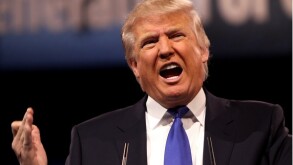In 2015 China's General Administration of Customs (GAC) has shown its commitment to updating relevant legislation and improving customs clearance and supervision policies and processes. Import tariff rates are being effectively reduced, bilateral & multilateral negotiations to facilitate international trade are making progress, customs efficiency is increasing, reforms in customs clearance and trade facilitation are constantly being deepened, the integration and optimisation of various types of Special Customs Zones (SCZs) is speeding up, and enterprise management and self-discipline systems in line with international practice are taking shape.
China's import and export tax rates may face more frequent adjustment in the future
In 2015, China made adjustments to consumption tax and import duty rates with a view to encouraging increased importation of consumer goods, to promote expanded domestic consumption levels, and better environmental governance, including energy saving and emission reduction. The adjustments were also aimed at easing the tax burden on enterprises to assist them in improving their competitiveness in international markets and encouraging industry transformation and upgrading in a harsh global economic environment.
To this end, in 2015 consumption tax rates were increased for the importation of refined oil products, import duty rates for consumer goods such as garments, footwear, skin care products, and disposable diapers were reduced by an average of more than 50% from June 2015, and export VAT refund rates for some high value-added products, core milling products, textile and garments were increased with effect from January 2015.
Since the overall economic outlook globally remains clouded, China may adjust import and export tax rates more frequently in the future than in the past. Enterprises should keep an eye on the change and properly plan and adjust their operating strategies.
Enterprises should pay close attention to administrative rulings on Customs Tariff Number (HS code) classifications
From July 1 2015, the GAC empowered Shanghai Classification Sub-centre (上海归类分中心) to issue administrative rulings on classification of merchandise (Chapter 84 to Chapter 90 of the Harmonised System rules) upon the application of business operators registered in the Shanghai Pilot Free Trade Zone (Shanghai PFTZ). According to a related notice issued by Shanghai Customs, importers and exporters may submit an application to the responsible customs authority for an administrative ruling or engage a third party to submit the application on their behalf. The application will be escalated to the Shanghai Classification Sub-centre, which shall issue administrative rulings within 60 days upon acceptance of related application material. The rulings should be sent to the applicant in writing and be published in the public domain and are applicable to all customs authorities within the territory of China beginning on the publication date. Goods imported or exported under the same conditions shall be subject to the same administrative rulings.
For enterprises, the administrative ruling on the classification of goods has three benefits: it solves difficult classification issues and increases the customs clearance efficiency; it is equally binding on both the enterprises and Customs; it helps enterprises estimate the cost for customs clearance and increases the predictability of cross-border trade business by allowing applications before import and export.
Considering the general binding force of the rulings, enterprises should pay close attention to the administrative rulings on classification of goods published by Customs to see whether the classified goods are the same as their own import or export goods. If they are the same, enterprises shall declare the same HS code to Customs accordingly. Failure by enterprises to adopt administrative rulings on classification of goods in time could affect customs clearance efficiency and the enterprise may face punishment by Customs for not correctly declaring the HS code of the goods. Since the classification of goods is highly technical, enterprises should seek assistance from professional advisers.
Import & export by cross-border e-commerce enterprises faces opportunities and challenges
The development of the internet has led to an explosion of cross-border online shopping and e-commerce imports and exports. Pilot cities for special cross-border e-commerce import regulations only include Shanghai, Chongqing, Hangzhou, Ningbo, Zhengzhou, Guangzhou, Shenzhen and Tianjin. Where an individual living anywhere in China imports goods via a pilot city the customs authorities of that city will impose solely the Personal Postal Articles Tax (PPAT) on the imported goods rather than the full range of taxes which would normally apply. For most consumer merchandise, an importer needs to pay duty (generally more than 9.8%) and import VAT (generally 17%) if goods are imported in general trade. Goods produced and sold purely domestically within China would be subject to tax at 17%. However, where PPAT applies under the pilot e-commerce scheme, a combined import tax of as low as 10% applies.
This pilot e-commerce tax scheme is consequently leading to market distortion issues as well as potentially eroding the tax base (tariff, VAT and income tax). Customers may be inclined to purchase from pilot cross-border e-retailers rather than domestically, given the 7% tax saving, and businesses selling into China are incentivised to alter their traditional B2B2C selling mode to B2C. Therefore, future adjustments of the tax mechanisms related to cross-border e-commerce are becoming the focus of attention of the industry.
To gain market opportunities, enterprises need to make proper business decisions in an unclear, uncertain environment. E-commerce enterprises should consider the following issues: the location selection of the project, product scope, tax and other costs, business modes, marketing, as well as potential tax scheme adjustment and related regulatory environment change.
Construction of Pilot Free Trade Zones and integration of special customs zones is accelerating
By 2015, China announced four PFTZs in Shanghai, Guangdong, Tianjin and Fujian. The top-level structure of the four PFTZs is basically the same but the strategic positioning is different. The Shanghai PFTZ is the first PFTZ in China and was aimed at playing an exploratory role in reforming and facilitating trade and investment. The Tianjin PFTZ is aimed at promoting the synergistic development of Beijing, and Tianjin and Hebei provinces, developing the full potential of financial leasing. Guangdong PFTZ's mission is to support cooperation between Guangdong, Hong Kong and Macau. The Fujian PFTZ is positioned to open and cooperate with Taiwan.
Since there are the above established free trade zones and more waiting to be approved, enterprises may have difficulties in understanding each zone's pros and cons, and in selecting the best investment and operating locations, particularly when the detailed policies of the established zones are still not clear. Enterprises can cooperate with related government bodies and professional research institutions to study and consider the PFTZs from perspectives such as business entrance, tax, customs, foreign exchange, inspection and quarantine, business and operations.
The exploratory implementation of related policies and an innovative supervision mode for PFTZs bring development opportunities for SCZs . On August 28 2015, the State Council published the Notice on Distributing the Plan on Speeding up the Integration and Optimisation of Areas under Special Customs Supervision (the Plan). The Plan stipulates that:
qualified SCZs shall be integrated and upgraded to comprehensive bonded zones;
different types of zones under special customs supervision shall be integrated and their functions expanded to cater for the regulations conducive to economic development; and
tax policies for SCZs shall be adjusted, especially policies on export VAT refund and enterprises' status as VAT general taxpayer.
This document may not only affect bonded processing, modern logistics and traditional trading businesses, but also facilitate cross-border leasing, cross-border e-commerce, maintenance and test, and reproducing industries. Enterprises operating in related sectors in China should pay close attention to this document and the specific implementation progress to provide reference for their decision-making and daily operations.
Bilateral and multilateral international free trade agreements may bring tax savings
While building free trade zones, China is also actively participating in bilateral and multilateral international free trade agreement (FTA) negotiations. There are 19 FTAs under negotiation by China, involving 32 countries and regions. Tariff concessions (or zero tariffs) are some of the main advantages of FTAs.
However, due to a limited understanding of FTAs, Chinese enterprises do not take full advantage of regional preferential certificates of origin. A few enterprises which have already applied for preferential duty rates under FTAs do not pay enough attention to the compliance management of certificates of origin either, exposing them to compliance risk that should not be ignored.
Enterprises need to pay attention to the negotiation progress and implementation of related FTAs, and evaluate, plan and adjust supply chain arrangements accordingly. In terms of operating, enterprises should sort import and export goods lists, examine related contract arrangements, and enhance employee training to better adapt to the rules of origin under new free trade agreements and enjoy preferential duty rates. For internal system controls, enterprises should ensure that there are procedures and policies in place, verify the existence of credible supporting data and commercial substance for the application of country of origin status, and make the information and data chain for country of origin traceable and reviewable.
China enterprise internal control and compliance management for customs may converge towards international best practice
Customs in China published Provisional Measures of the Customs of the People's Republic of China on Administration of Enterprise Creditworthiness and Customs Standards for Certified Enterprises in 2014 to adjust the compliance management regulations on enterprises; it also laid the legal foundations for mutual recognition of AEO (Authorised Economic Operator) and C-TPAT (Customs-Trade Partnership Against Terrorism). China Customs is also actively negotiating with customs authorities in other countries on mutual recognition. China has so far signed AEO Mutual Recognition Decisions with Singapore, South Korea, Hong Kong and the EU, and is negotiations with the US, Taiwan and other countries or regions. Enterprises that are AEO can enjoy related effective and practical customs clearance benefits such as reduced physical goods inspection rates and the speeding up of clearance through simplified document checks.
China Customs is also introducing and establishing an enterprise self-discipline system, and regulations on a Voluntary Disclosure Program (VDP). China has no such customs regulations in place and China Customs is discussing and exploring related measures, such as mitigating or exempting from punishment enterprises that voluntarily identify and report non-compliance in operations, or reducing or eliminating overdue fines. Such regulations will serve as a policy protection for enterprises that promptly identify and resolve operating problems in the future.
This poses higher requirements on enterprises' operations related to customs and internal control. Therefore, enterprises should make comprehensive evaluations, standardise import and export processes, improve internal control policies, and enhance compliance and self-discipline to realise self-discipline in import and export activities.
More to come
As well as the above mentioned customs reforms and changes in the past year, 2016 is bound to be a year full of opportunities and challenges – also a year worth attention and expectation. Enterprises should conduct deep studies of the main customs policies and measures stated above, track the implementation progress of related reforms, evaluate the implications of the reforms and make business adjustments. Enterprises that should pay special attention include enterprises engaging in bonded processing, traditional trade, e-commerce and logistics.

|
|
Eric ZhouPartner, Tax KPMG China 8th Floor, Tower E2, Oriental Plaza 1 East Chang An Avenue Beijing 100738, China Tel: +86 10 8508 7610 Eric Zhou worked for China Customs for more than nine years before joining KPMG China in 2004, where he is now the national leader of the trade and customs practice Eric specialises in cross-border customs advisory/defence services such as HS (Harmonised System) codes determination, customs valuation and processing trade management concerning multinational enterprises in industrial markets and consumer markets. He also has extensive experience of corporate income tax, customs valuations, and VAT and transfer pricing, which are closely linked to customs issues. Eric is a chartered tax adviser (CTA) from the Chartered Institute of Taxation in the UK and is a member of the Association of Chartered Certified Accountants (ACCA). |

|
|
Helen HanDirector, Tax KPMG China 8th Floor, Tower E2, Oriental Plaza 1 East Chang An Avenue Beijing 100738, China Tel: +86 10 8508 7627 Helen Han worked for China Customs more than 10 years in various departments such as the Investigation Bureau and Post-Clearance-Audit Section in both GAC, Guangdong Sub-Administration and Huangpu Customs. She also worked for local government and has overseas study experience, having pursued a master's degree in art in Paris before joining KPMG in China. Helen worked as a project leader in the Customs authority and a trainer for nationwide Customs officials. She was sent by GAC to study post-clearance audit, price valuation, risk management and customs management abroad, and also attended a few international customs academic seminars to discuss with World Customs Organisation experts on behalf of the PRC Customs. She was involved in writing and designing regulations, and used to organise, and was responsible for, some important cases. Since joining KPMG, Helen has been integrally involved in a wide range of customs projects such as consulting, compliance and defence, including customs valuation, processing trade, internal control implementation and related-party pricing. She provides services to many multinational corporations in various industries. She has also been a guest speaker at various customs seminars and training courses hosted by Customs authority. Helen has a master's degree in economics. |

|
|
Dong ChengPartner, Tax KPMG China 50th Floor, Plaza 66 1266 Nanjing West Road Shanghai 200040, China Tel: +86 21 2212 3410 Before joining KPMG in January 2004, Dong Cheng served as the director of policy research in the Shanghai Customs from September 1991 to December 2003. During his tenure, his role was to research complex customs issues from the various local customs units in the Shanghai region and advise them on the appropriate treatment. In addition, he was involved in the drafting of a number of PRC customs regulations. Over the years, Dong Cheng has developed excellent relationships with senior customs officials throughout the PRC. Since joining KPMG, Dong Cheng has been integrally involved in the analysis and development of resolution strategies for multiple trade and customs issues, including customs valuation, import tariff classification and related-party pricing. Dong Cheng gained extensive knowledge and experience in all major areas of customs duty activities, such as valuation, duty reduction and exemption, duty collection methodology and customs policy implementation study, through providing services to many multinational corporations in various industries, including automobile, chemical and luxury goods. These services comprise strategic planning, duty saving and industry-specific analysis. He has also assisted many multinational companies to cooperate with Customs audits on various issues, such as smuggling and the false declaration of import goods. |

|
|
Philip XiaSenior Manager, Tax KPMG China 38th Floor, Teem Tower 208 Tianhe Road Guangzhou 510620, China Tel: +86 (20) 3813 8674 Philip has worked for the China Customs at both GAC and Huangpu Customs District for more than eight years. After that, he joined KPMG China in 2007. In KPMG, he has been actively involved in a wide range of customs projects such as customs valuation, compliance review and internal control improvement. He has advised multinational clients on various customs cost-saving opportunities, such as duty-free equipment and processing trade practice. He has also assisted his clients in audit defence and customs operation setup issues. His clients include manufacturing, logistics and trading companies. Industries involved include electronics, chemicals, machinery, aeroplane repairing, luxury consumables and foods. Philip holds a bachelor of economics degree, with a major in finance, from Wuhan University. |

|
|
Melsson YangSenior manager, Tax KPMG China 38th Floor, Teem Tower 208 Tianhe Road Guangzhou 510620, China Tel: +86 20 3813 8612 Melsson has more than 20 years of professional experience of working in China Customs, commercial business and consulting. He advises multinational clients on handling logistics related projects, as well as taking care of consulting related to customs audit and investigation, processing trade management and tariff engineering. Melsson started his career as an officer with China Customs, after graduating from a top customs school, then he moved to the private field, and was responsible for customs and logistics operations of a well-known telecommunications manufacturer. He also served at leading logistics and supply chain management companies as the regional customs & solution manager for southern China. Melsson is a member of the expert panel for the Guangzhou government and a licensed customs broker. |









